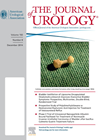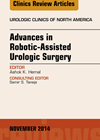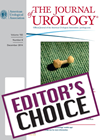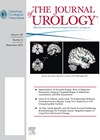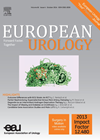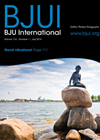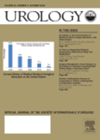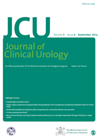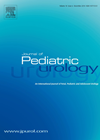
Journal Reviews
Thiazide diuretic prophylaxis for kidney stones and the risk of diabetes mellitus
Thiazide diuretics have been used to reduce calcium nephrolithiasis recurrence as it is tolerated well, inexpensive and reduces calcium excretion in urine. It has been linked with increased risk of diabetes mellitus (DM) in the presence of hypertension (ALLHAT study),...
Robot assisted radical prostatectomy – could it be gold standard?
Prostate cancer (PCa) is still the second leading cause of cancer-related death in men in the United States. Most of the PCa are organ confined at the time of diagnosis. To watch (observation / active surveillance) or fry (radiotherapy) or...
Fluoroquinolone resistant rectal colonisation predicts risk of infectious complications after TRPB
Transrectal prostate biopsy (TRPB) has been associated with increased risk of infection between 3.6-5% and sepsis rates of 0.3-3.1% mainly due to fluoroquinolone resistance (FQR). At present, FQ antibiotic prophylaxis is utilised commonly across North America and Europe but due...
Lichen sclerosus and isolated bulbar urethral stricture disease
The incidence of urethral stricture in men with lichen sclerosus (LS) has been reported to be between 4.8% and 14%. LS limited to the glans and urethral meatus can be treated with acceptable outcomes; however, more extensive urethral disease requires...
BCG strain differences have an impact on clinical outcome in bladder cancer immunotherapy
Bacillus Calmette-Guérin (BCG) has been part of the treatment algorithm for non-muscle invasive bladder cancer (NMIBC) for a number of years. In this single centre, prospective, randomised trial, two of the most commonly available strains, BCG Connaught and BCG Tice,...
Is TRUS and biopsy obsolete as a diagnostic test for prostate cancer: refining the perineal biopsy technique?
Whilst there has been a dramatic shift in how patients are investigated for potential prostate cancer, transrectal ultrasound (TRUS) and biopsy remains the most commonly used technique for tissue sampling. In this single centre, retrospective analysis, 634 men, over a...
Prostate alpha-1 receptors: what is new?
This article from the west of Germany will be of interest to many of us who use alpha-blockers for bladder outflow symptoms. The classic model of understanding of alpha receptors has been challenged recently. Further models have been identified, including...
IC and risk of CHD
Bladder pain syndrome / interstitial cystitis (BPS/IC) is a chronic, multifactorial and relapsing condition. Aetiology includes: inflammation, allergic, neuropathic, auto immune, vascular factors, etc. This study from Taiwan aimed to investigate the risk of coronary heart disease (CHD) among IC...
Impact of prostatic apex in continence after RARP
This article investigates the impact of prostatic apical shape from preoperative magnetic resonance imaging (MRI) on early recovery of urinary continence after robot-assisted radical prostatectomy (RARP). It is a retrospective study of 1011 patients at a tertiary centre. Patients were...
Cryotherapy in prostate cancer
This review of the literature aims to summarise what is known in regards to outcomes in patients undergoing cryotherapy in a number of settings: whole gland, salvage and targeted focal therapy. It highlights that more prostate cancers are being diagnosed...
Androgen insensitivity in patients with proximal hypospadias
A number of surgeons use preoperative androgen stimulation for a period of time prior to hypospadias surgery. The aim is to increase glans circumference, penile length and improve prepucial vascularisation pre-surgery. Data confirming the results of these aims is scarce....
Adolescents and adults in paediatric urology clinics
This elegant descriptive paper retrospectively reviewed cases seen in a paediatric urology clinic with respect to age, diagnosis and presentations in a major Brazilian city. Of 521 patients, 404 were <12 years old, 103 were between 12-18 and 14 were...

